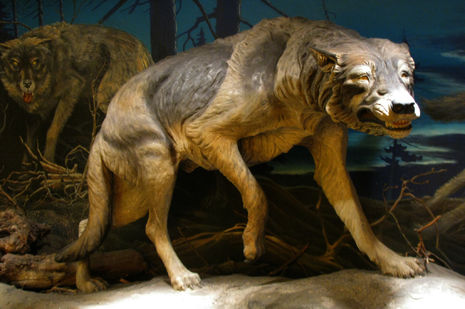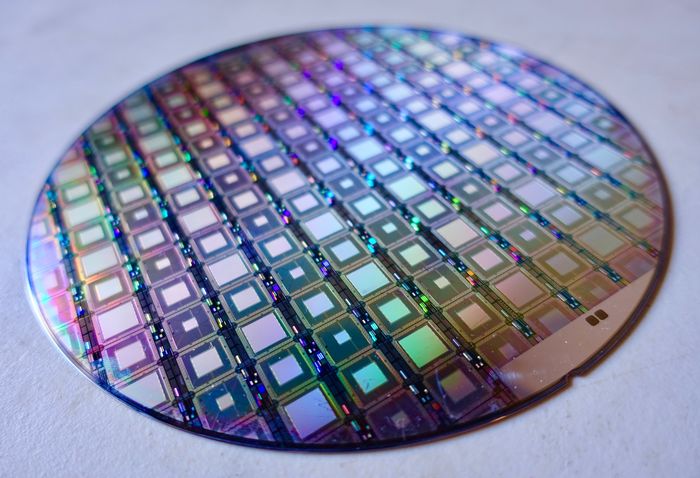A mammoth discovery? The science of de-extinction
Colossal Biosciences raises hype over the return of a lost species, but some scientists dispute this and their overall agenda

On April 7th 2025, Colossal Biosciences announced that it had brought the dire wolf back to life. The US based biotechnology company has produced three pups of the long-extinct species of canine that last roamed the Americas around 100,000 years ago. Two males, named Romulus and Remus, were born last October, and a female pup named Khaleesi was born this January.
However, many scientists argue that they are not true dire wolves. Jacquelyn Gill, a paleoecologist at the University of Maine, called them “designer dogs”.
While Colossal Biosciences claimss to have achieved the first ‘de-extinction’, they are not the first to attempt this feat. In 2003, a team of scientists cloned the Pyrenean ibex, a Spanish wild goat, which went extinct in 2000. They did this with somatic cell nuclear transfer (SCNT), the same technology behind Dolly the sheep. Unfortunately, the calf died within a few minutes of birth due to lung defects.
“Perfect de-extinction is not really possible”
The Pyrenean ibex left behind DNA in artificially extracted cells, perfectly preserved in liquid nitrogen, which allows cloning by SCNT. Unfortunately, long-gone animals such as the dire wolf and woolly mammoth have only left DNA fragments which are unusable for direct cloning. To overcome this, Colossal Biosciences instead opted to extract cells from existing species and genetically modify them to resemble ancient DNA in parts. Sending these cells for cloning produces new organisms resembling some characteristics of extinct species.
A month before the dire wolf, Colossal Biosciences announced the creation of ‘woolly mice’ – mice clones with up to seven genes modified to resemble that of mammoths, displaying mammoths’ characteristic long, curly, golden-brown hair.
With the dire wolf, the company team took things further by changing 20 bases across 14 genes in the genetic code on grey wolf cells, chosen due to the grey wolf’s resemblance to the dire wolf in bone anatomy. The embryo carrying the modified genome was implanted into surrogate dogs, which gave birth to the ‘dire wolf’ pups displaying the characteristics of white fur and anatomical details which are distinct from that of grey wolves.
“These behaviours died with the dire wolves and are lost forever”
While Romulus, Remus, and Khaleesi may physically resemble dire wolves, they are nevertheless not their true offspring. These lofty claims have attracted criticism. As Beth Shapiro, Colossal Biosciences’ chief science officer, admits, creating an organism completely genetically identical to a dire wolf was “not really possible”. Instead, they focused mainly on genes that alter the appearance of the animal. Shapiro claims the goal is to have ‘functional versions’ of extinct species. The company aims to replicate the process, using Asian elephants to produce the modern equivalent of mammoths in the future.
But why – what benefit does cloning creatures create? Colossal Biosciences states that their effort can help restore ‘positive’ impacts on the ecosystem that extinct species once had. Many scientists, including Adam Rutherford, a well-known geneticist, doubt this. For social and intelligent animals like dire wolves and mammoths, it is likely that some behaviours were not hardwired into their genome but rather formed through generations of social interactions. It is highly possible that these behaviours died with the dire wolves and are lost forever. It is also impractical to completely restore the ancient ecosystems that these animals once inhabited, as this may disrupt current ecosystems.
While some believe that the effort of ‘de-extinction’ has little value beyond being a public stunt, the technology refined for this process could be used for other purposes. Genetic editing, for example, holds the potential to restore genetic diversity in endangered species. Colossal Biotechnology is also developing artificial wombs to remove the need for surrogates in the future, which some speculate may be applicable to humans in the future.
Meanwhile, the company shows no sign of slowing down its efforts to ‘bring back’ extinct species. Next on their list are dodos and the tasmanian tiger – how long until Jurassic Park becomes a reality?
 News / SU reluctantly registers controversial women’s soc18 December 2025
News / SU reluctantly registers controversial women’s soc18 December 2025 Features / Should I stay or should I go? Cambridge students and alumni reflect on how their memories stay with them15 December 2025
Features / Should I stay or should I go? Cambridge students and alumni reflect on how their memories stay with them15 December 2025 News / Dons warn PM about Vet School closure16 December 2025
News / Dons warn PM about Vet School closure16 December 2025 News / Cambridge study finds students learn better with notes than AI13 December 2025
News / Cambridge study finds students learn better with notes than AI13 December 2025 News / Uni registers controversial new women’s society28 November 2025
News / Uni registers controversial new women’s society28 November 2025










